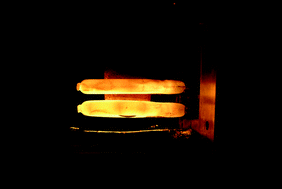Rapid high-performance sample digestion for ICP determination by ColdBlock™ digestion: part 1 environmental samples
Abstract
Validation, using a prototype of a novel sample digestion device (ColdBlock™ (patent pending, WO 2011/054086 A1)), for elemental determination, has been conducted. This device utilizes focused infra-red radiation to induce speedy sample breakdown and offers an alternative technique of wet sample dissolution that combines reduced digestion time with excellent accuracy and precision. The current study explores the digestion capacity of ColdBlock™ for a variety of solid environmental samples that include difficult matrices. Two certified materials (contaminated soil SS-1, bio-solid CRM030-040) were analyzed. The technology was also used to compare results from a recent inter-laboratory evaluation of an uncertified commercial sludge sample (LPTP12-S2) using inductively coupled plasma optical emission spectroscopy (ICP-OES). Quantification of eleven major metals (Al, Ca, Cr, Cu, Fe, Mg, Mn, Ni, Pb, V, Zn) yielded recoveries from 89–108% and relative standard deviations from 0.7–3.6%, employing a common aqua regia leach that required reduced volumes of acid. Digestion times were satisfactory, since the samples required only 15–20 minutes to deliver the results described above. This technique shows great potential to improve sample throughput while maintaining the quality of analytical results for both research and commercial applications.


 Please wait while we load your content...
Please wait while we load your content...